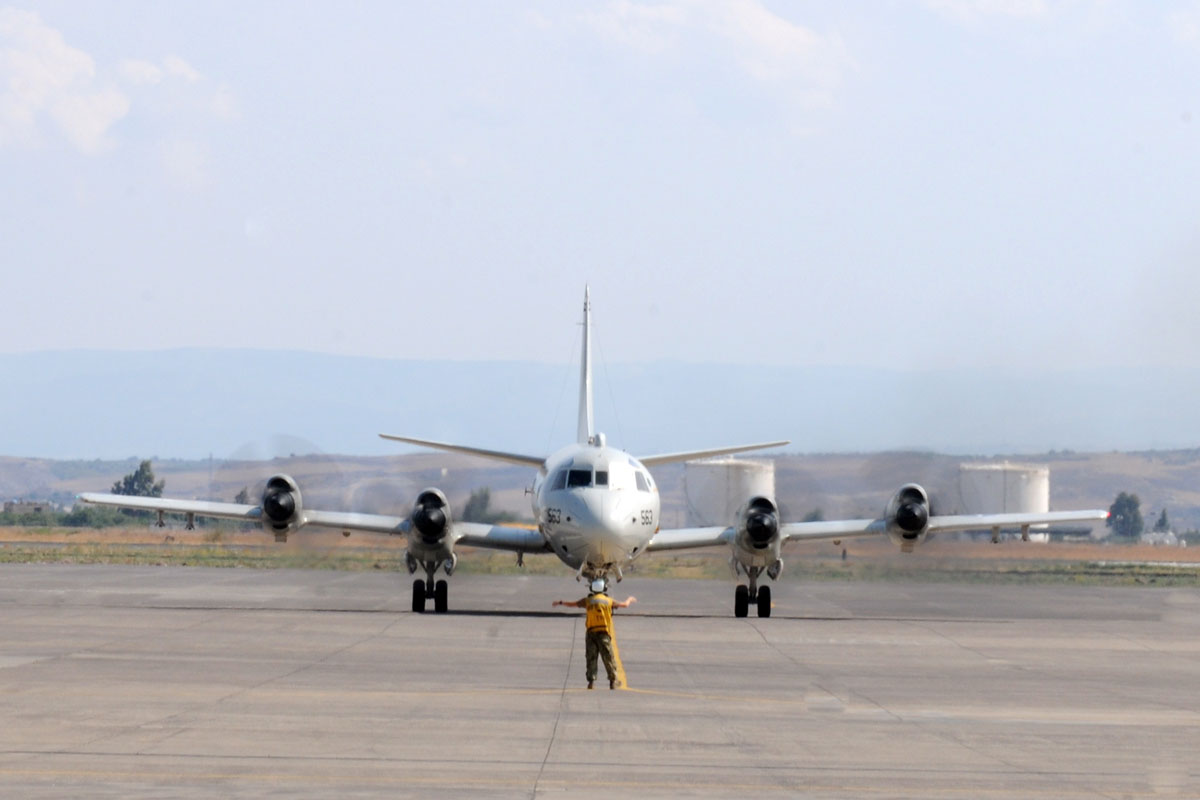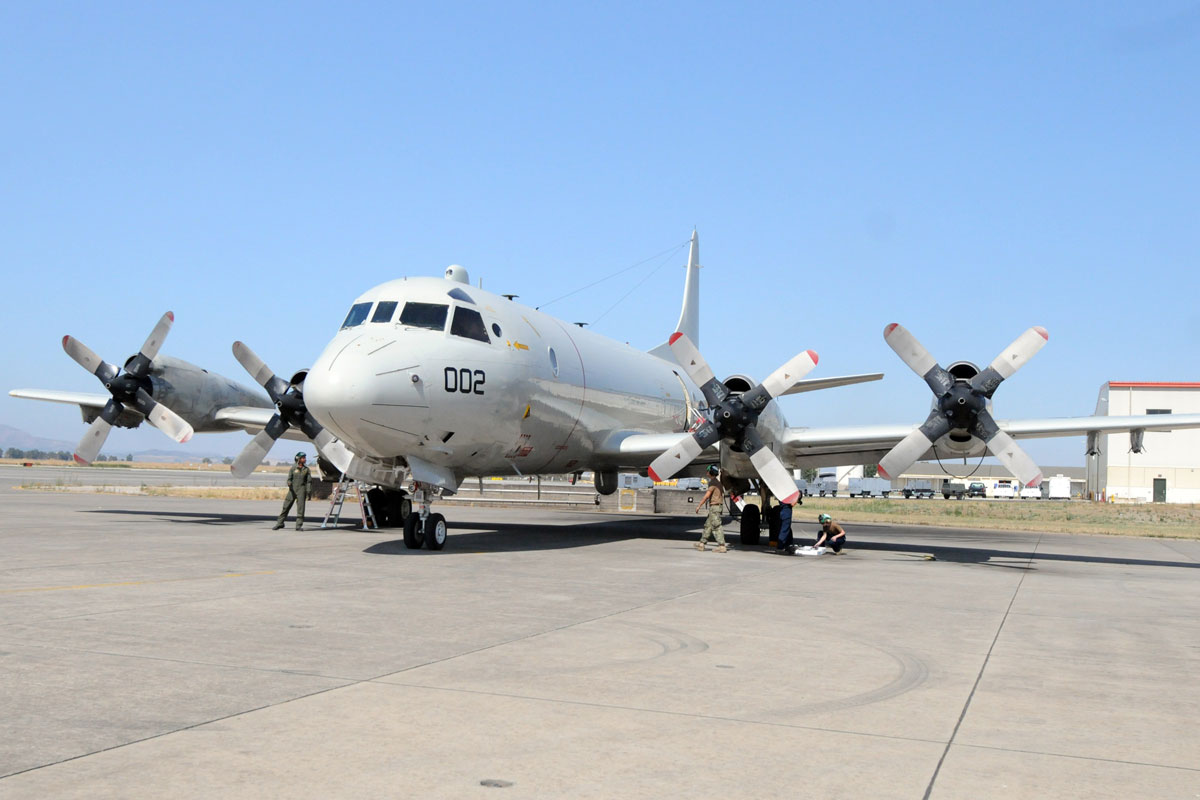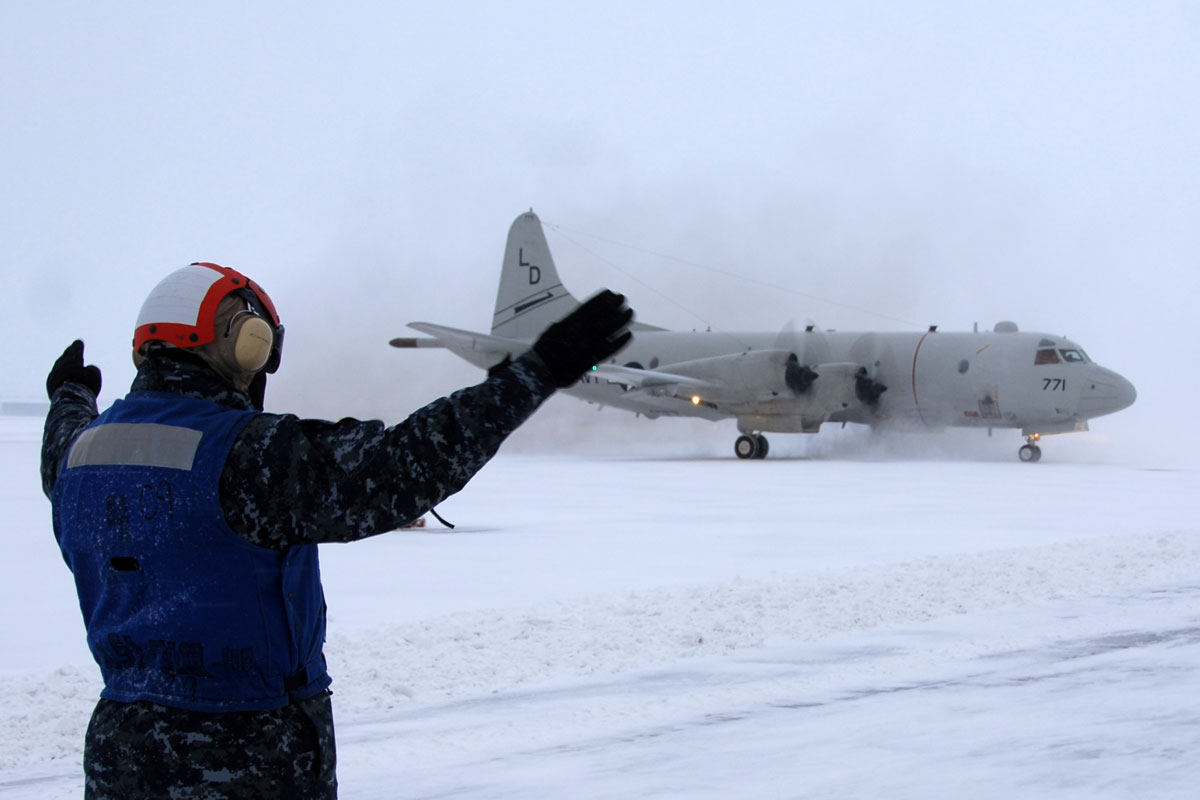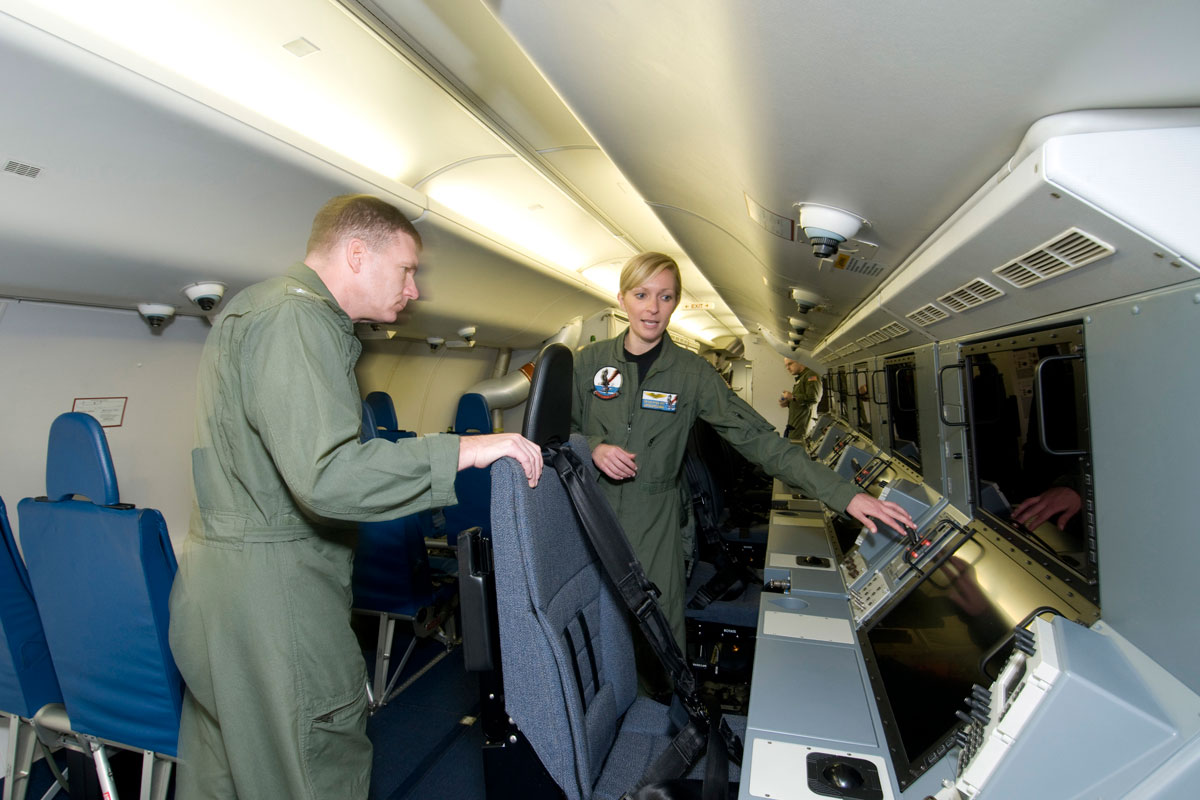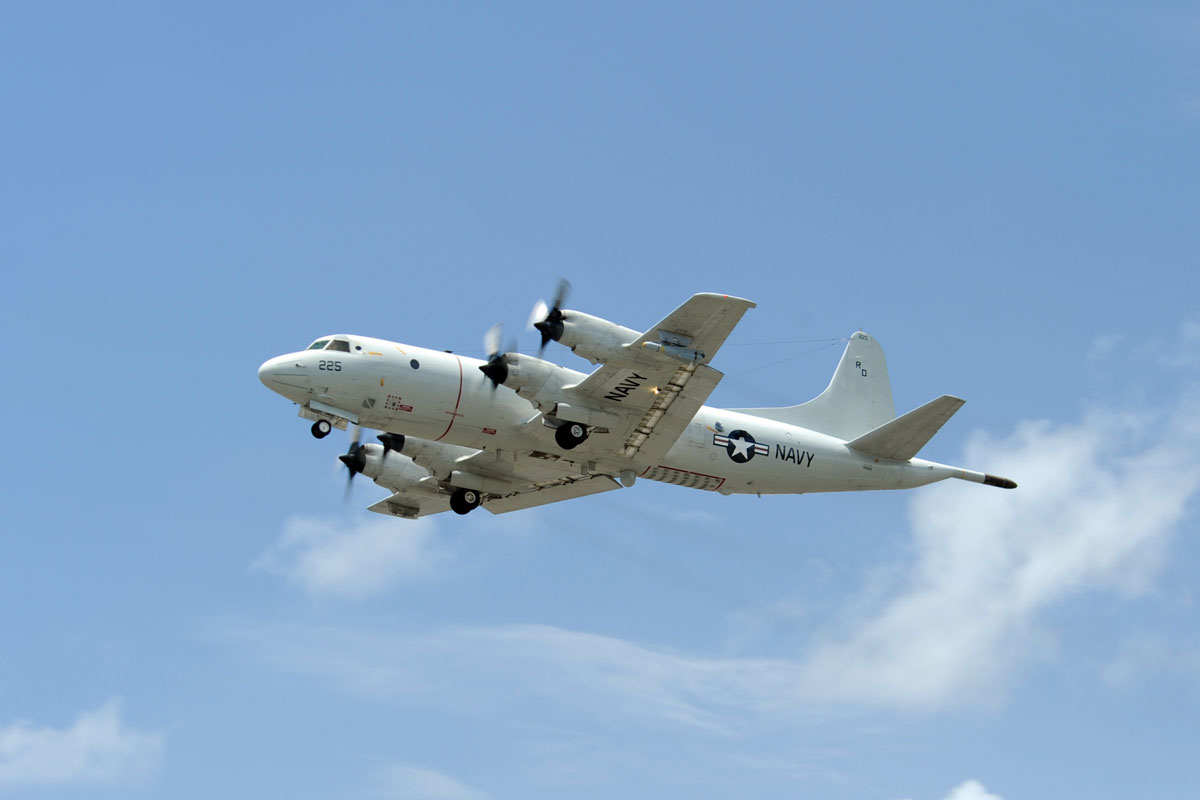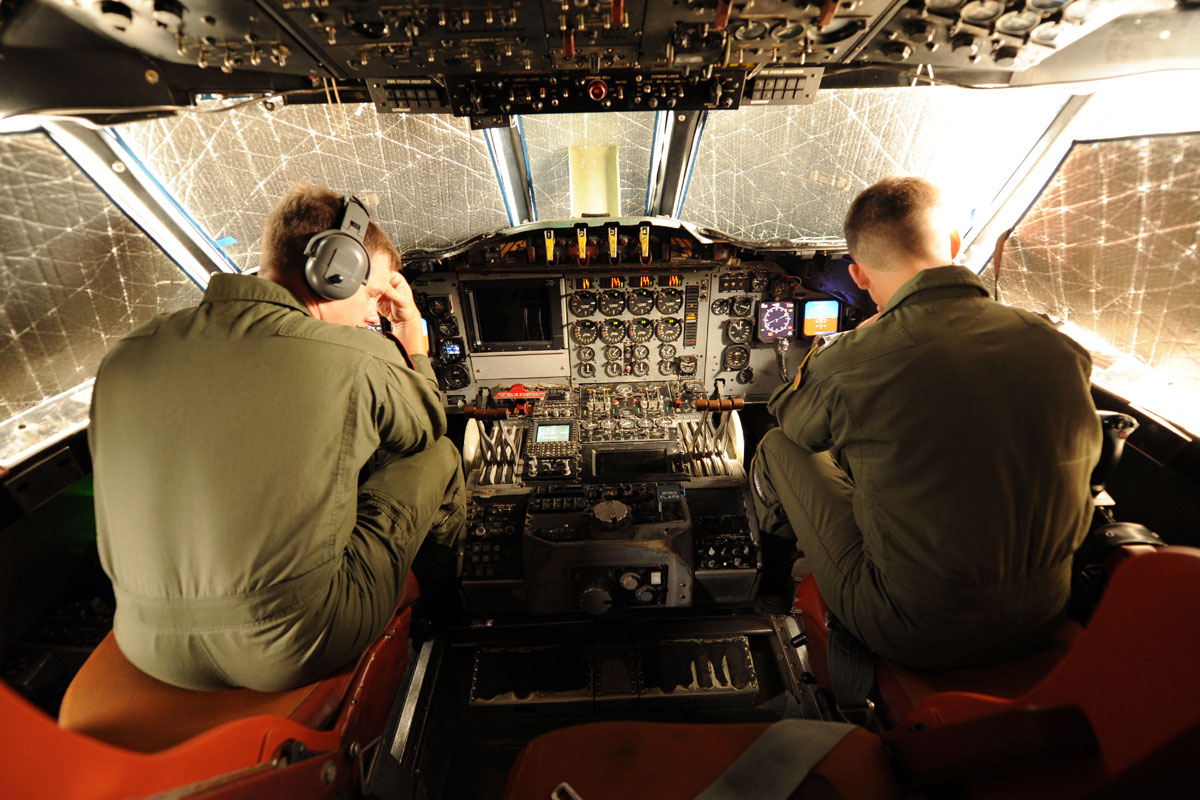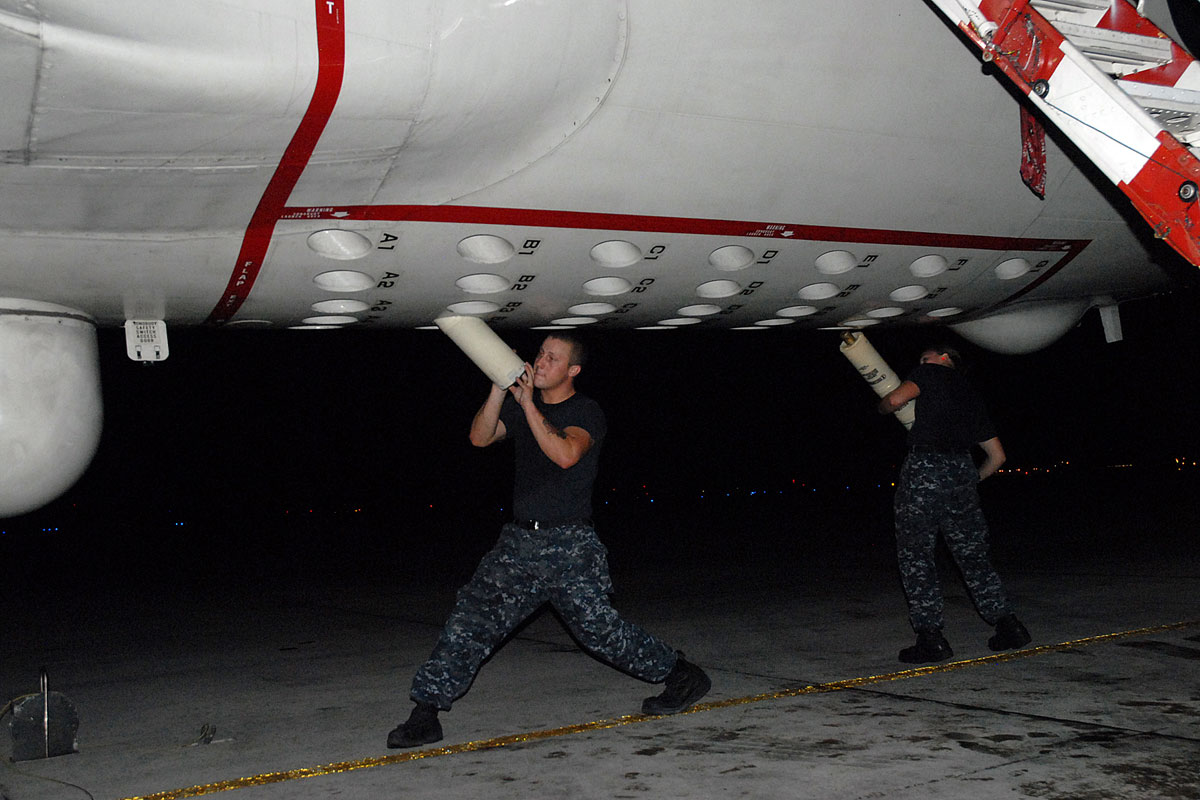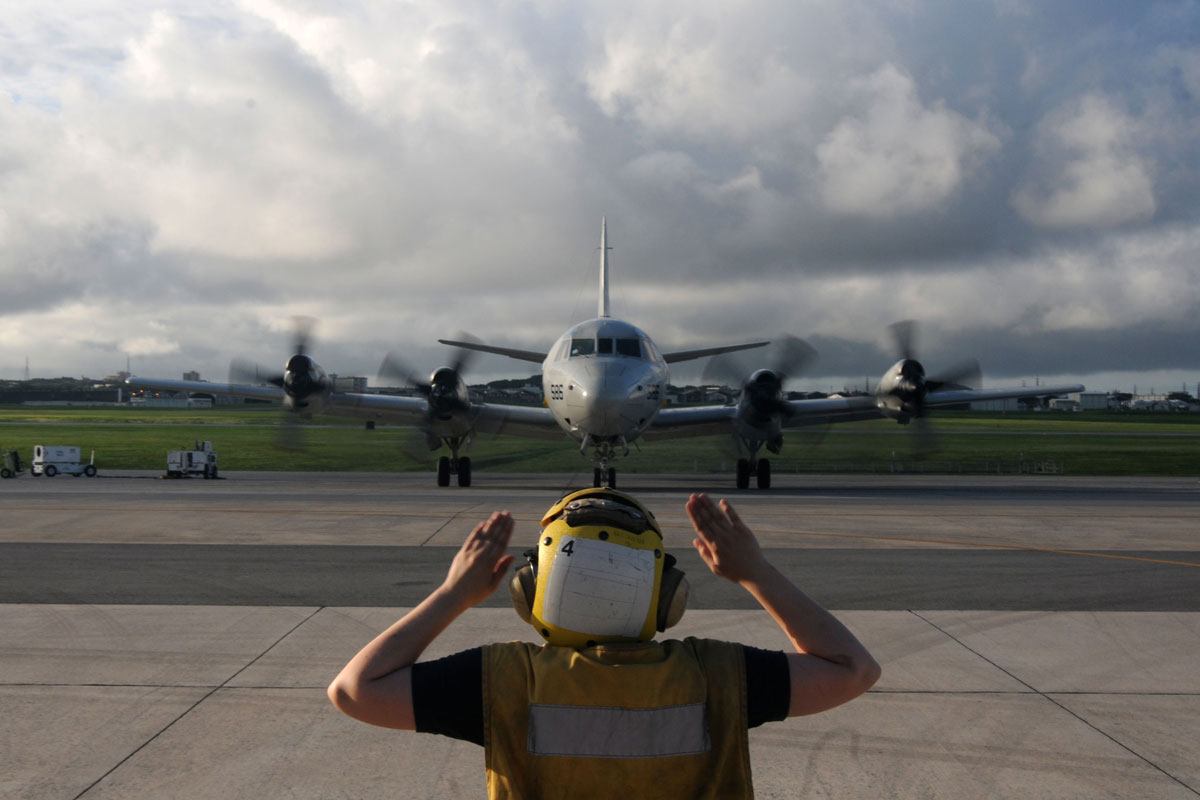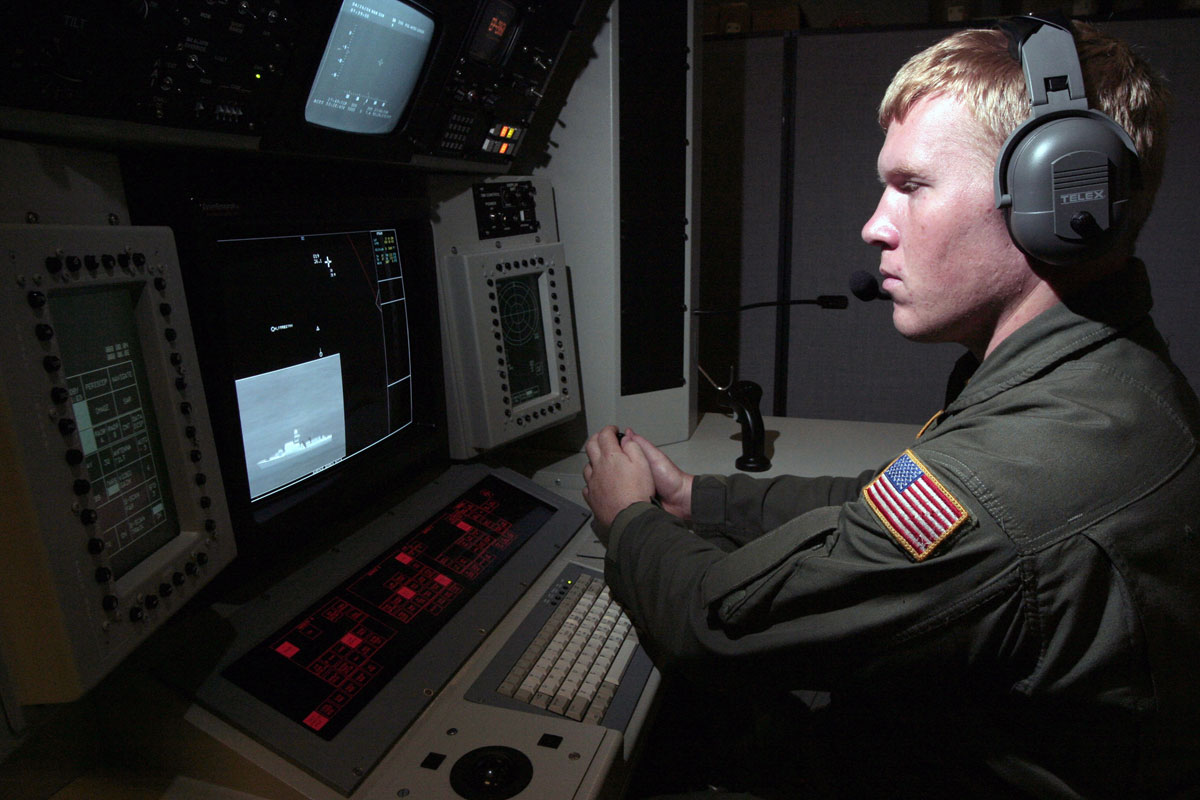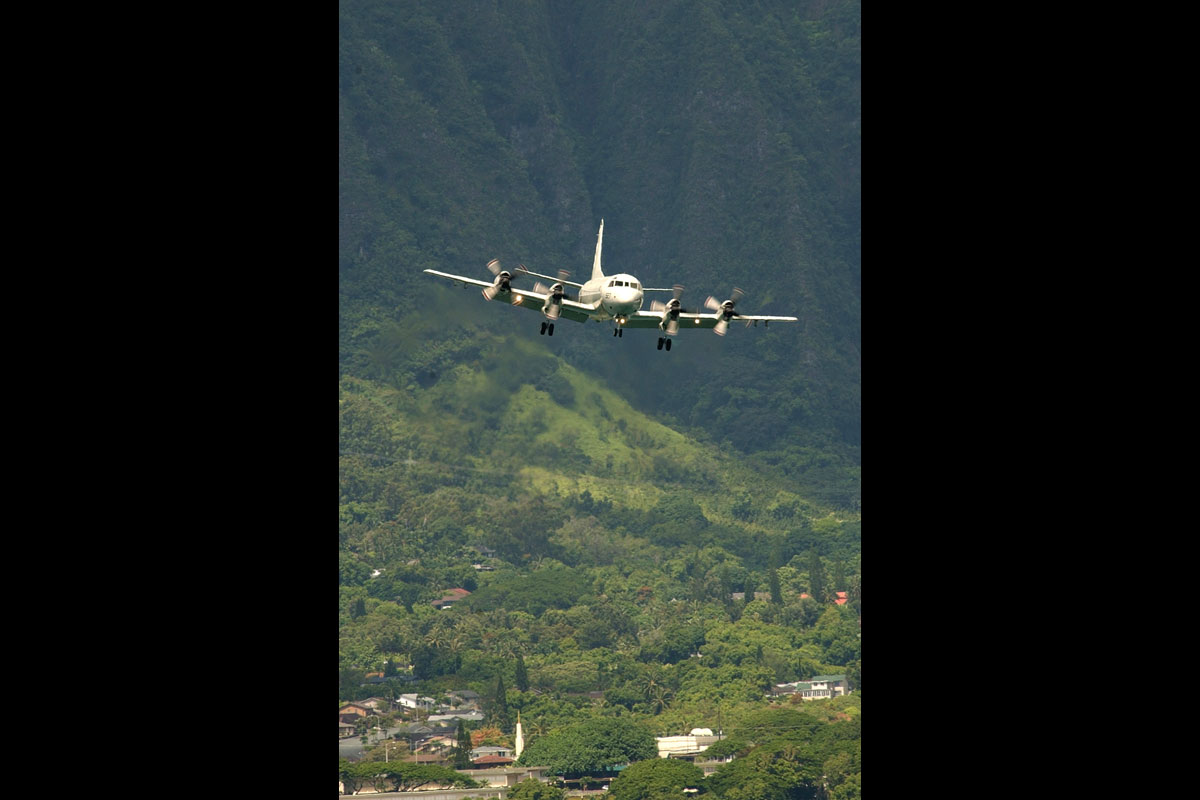Manufacturer: Lockheed Martin
Service: USN Armament: 20,000 pounds of ordnance, including AGM-84 Harpoon, AGM-84E SLAM, AGM-84H/K and AGM-65F Maverick missiles, Mk46/50/54 Propulsion: Four Allison T-56-A-14 turboprop engines Max Airspeed: 411 knots Range: 2,380 nm Crew: three pilots, two naval flight officers, two flight engineers, three sensor operators, one in-flight technician.The P-3C Orion is a four-engine turboprop aircraft originally designed by the U.S. Navy to locate and track enemy submarines. The mission has been modified in recent years to provide on-station surface surveillance for both land and sea missions.
The P-3C has advanced submarine detection sensors such as directional frequency and ranging (DIFAR) sonobuoys and magnetic anomaly detection (MAD) equipment. The avionics system is integrated by a general purpose digital computer that supports all of the tactical displays, monitors and automatically launches ordnance and provides flight information to the pilots. In addition, the system coordinates navigation information and accepts sensor data inputs for tactical display and storage. The P-3C can carry a mixed payload of weapons internally and on wing pylons.
Originally deployed in the late 1960s, the P-3C Orion has undergone a series of system upgrades to detect modern threats. The USQ-78(V) Upgrade Program is improving the USQ-78(V) Single Advanced Signal Processor system Display Control Unit, a programmable system control processor that provides post processing of acoustic data and is the main component of the Update III acoustic configuration. Up to 100 P-3C aircraft are being upgraded to USQ-78B configuration with System Controller (SC) and Acoustic Sub Unit (ASU) Tech Refreshes. In addition, all analog acoustic data recorders are being replaced with digital data recorders.
The Critical Obsolescence Program (COP) began in fiscal year 2004 to improve aircraft availability through replacement of obsolete and/or top degrader systems. COP systems include the ARC-230 HF as replacement for the ARC-161, the USQ-130 Data Link as replacement for the ACQ-5, the ASW-60 Autopilot as replacement for the ASW-31, the ASX-6 Multi-Mode Imaging System (MMIS) as replacement for the AAS-36 IRDS and the Telephonics Secure Digital Intercommunications System (SDI) as replacement for the AIC-22 ICS.
The Navy has shifted the P-3C’s operational emphasis to the littoral regions and is improving the antisurface warfare (ASUW) capabilities of the P-3C. The antisurface warfare improvement program (AIP) incorporates enhancements in ASUW, over-the-horizon targeting (OTH-T) and command, control, communications and intelligence (C4I), and improves survivability. The AIP program presently includes 72 kits on contract; 69 aircraft have been delivered to the fleet as of September 2006. Upgrades to the armament system include the addition of the AGM-84H/K SLAM-ER missile and Mk54 torpedo capabilities.
The P-3C fleet has experienced significant fatigue degradation over its operational life as quantified through the Service Life Assessment Program (SLAP). The Navy has instituted special structural inspections programs and replacement kits to refurbish aircraft structures to sustain airframe life. The 12 active patrol squadrons (down from 24 in 1991) operate P-3C AIP and Update III configured aircraft. Other P-3 variants still in service include one VP-3A executive transport, four NP-3C and eight NP-3D research and development, testing and evaluation and oceanographic survey aircraft.
The P-3C Orion will eventually be replaced by the P-8A Poseidon jet aircraft.
